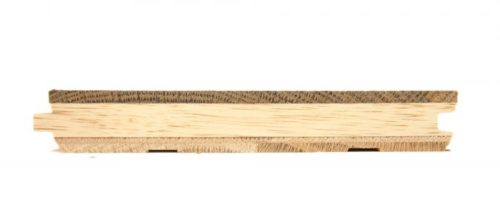Engineered wood flooring has become a popular choice for homeowners because of its durability, versatility, and ease of installation. One of the most important components of an engineered wood floor is the wear layer. The wear layer is a top layer of hardwood that provides the visual appeal and the ability to sand and refinish the floor. In this blog post, we’ll discuss the importance of the wear layer on an engineered wood flooring, including its ability to be sanded and refinished and the differences in durability and cost.
Ability to Sand and Refinish
One of the key benefits of an engineered wood floor with a thick wear layer is its ability to be sanded and refinished. Sanding and refinishing an engineered wood floor can bring it back to its original beauty, removing any scratches or dents that may have occurred over time. The thickness of the wear layer determines how many times the floor can be sanded. The thicker the wear layer, the more times this can be done. Typically, you want to have at least a 3mm wear layer as anything less would damage the layer down to its inner core.

Durability
The durability of an engineered wood floor is directly related to the thickness of the wear layer and its choice of finish. A thicker wear layer provides better protection against wear and tear, making the floor more durable. In general, a wear layer thickness of 2mm or more is considered to be durable and long-lasting. Thinner wear layers may not provide the same level of protection against wear and tear, but they are generally less expensive. If you don’t plan on sanding your flooring in the future, these types of floors can be a perfect option for you.
Another thing to consider is how the flooring is finished. Often times, especially in todays market, the color of the top layer is fumed or smoked which allows the color to go all the way through the layer. This method gives you full protection against scratches and dents by always showing the true color vs seeing the plywood/osb underneath.
Cost
The cost of an engineered wood floor is influenced by several factors, including the species of wood used, the thickness of the wear layer, and the manufacturing process. Generally, floors with thicker wear layers are more expensive than those with thinner wear layers. However, the upfront cost of an engineered wood floor with a thicker wear layer may be offset by the floor’s longer lifespan and the ability to sand and refinish the floor multiple times. You will want to consider the length of time you plan on spending in your home, your lifestyle and how often you would like to change the color of your wood flooring.

In conclusion, the wear layer is an essential component of an engineered wood floor, providing both visual appeal and durability. The ability to sand and refinish the floor and the differences in durability and cost are directly related to the thickness of the wear layer. If you’re considering an engineered wood floor, it’s important to choose a wear layer thickness that meets your needs and fits within your budget. With proper maintenance, an engineered wood floor with a thick wear layer can provide a beautiful and long-lasting flooring solution for your home.
